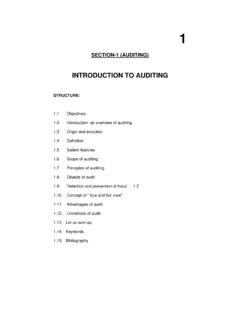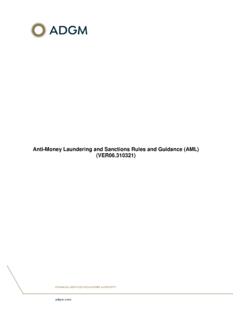Transcription of ENGINEERING ECONOMICS 1.0 ENGINEERING ECONOMICS …
1 Manual of ENGINEERING Economy Nanda Shakya Manual of ENGINEERING Economy Nanda Shakya Page 1 CHAPTER 1 introduction TO ENGINEERING ECONOMICS ENGINEERING ECONOMICS origin OF ENGINEERING ECONOMY PRINCIPLES OF ENGINEERING ECONOMY ROLE OF ENGINEERS ON ECONOMIC DECISION CASH FLOW DIAGRAM Manual of ENGINEERING Economy Nanda Shakya Manual of ENGINEERING Economy Nanda Shakya Page 2 ENGINEERING ECONOMICS ECONOMICS is defined as the study of allocation of scarce resources among unlimited ends (or wants). Our wants are unlimited or at least increasing ever and to satisfy all these wants, we need unlimited supply of productive resources which could provide necessary goods and services to the community. However, resources are scarce limited in supply and obtained at some cost.
2 In other words, resources are scarce in relation to its needs Therefore, scarce resources should be used wisely judiciously and more effectively at optimum level, minimizing the cost and maximizing profit and benefit without compromising the quality of product or service. All ENGINEERING decisions involve number of feasible alternatives or options. These feasible alternatives must be properly evaluated before implementing them. If there is no alternative, there is no need of economic study. Mission of engineers is to transform the resources of nature for the benefit of the human race. Engineers translate an idea into reality. However an idea may be technically excellent incorporating sound design, latest technology but if it does not convert into real product or service that is affordable and fit for purposes satisfying needs and requirements of its end users, clients, target group, beneficiary group, then it is not worthwhile to invest in such ventures.
3 The products or services generated should use optimized utilization of various resources so that cost of production is not high, affordable to users and compete with similar product and services of competitors in the market. ENGINEERING economy involves the systematic evaluation of the economic merits of proposed solutions to ENGINEERING problems. To be economically acceptable ( affordable), solutions to ENGINEERING problems must be demonstrate a positive balance of long-term benefits over long-term costs,.. (Accreditation board for ENGINEERING and Technology).. Manual of ENGINEERING Economy Nanda Shakya Manual of ENGINEERING Economy Nanda Shakya Page 3 origin OF ENGINEERING ECONOMY PRINCIPLES OF ENGINEERING ECONOMY Development of ENGINEERING Economy as a separate field of study is relatively recent.
4 It has no well recorded past history. It does not mean that, historically, costs are overlooked in ENGINEERING decisions. Ultimate economy is primary concern to the engineer. The Economic Theory of Railway Location, 2nd ed. New York: John Wiley & Sons, 1987 written by Arthur M. Wellington, a civil engineer, pioneered ENGINEERING interest in economic evaluation. His interest was railway in USA. A text book Principles of ENGINEERING Economy, New York: The Ronald Press Company, 1930, was published by Eugene Grant. He is considered as the father of ENGINEERING economy. Current developments are pushing to encompass new methods of risk, sensitivity, resource conservation and effective utilization of public funds and so on. The development, study and application of any discipline must begin with a basic foundation.
5 ENGINEERING economy involves set of principles. In ENGINEERING economic analysis, experience has shown that most errors can be traced to some violation or lack of adherence to the basic principles. PRINCIPLE 1 - DEVELOP THE ALTERNATIVES: The choice (decision) is among alternatives. The alternatives need to be identified. A decision involves making a choice among alternatives. Developing and defining alternatives depends upon engineer s creativity and innovation. PRINCIPLE 2 - FOUCUS ON THE DIFFERENCE: Only the differences in expected future outcomes among the alternatives are relevant to their comparison and should be considered in the decision. If all prospective outcomes of the feasible alternatives were exactly the same, obviously, only the differences in the future outcomes of the alternatives are important.
6 Outcomes that are common to all alternatives can be disregarded in the comparison and decision. For example, if two apartments were with same purchase price or rental price, decision on selection of alternatives would depend on other factors such as location and annual operating and maintenance expenses. Manual of ENGINEERING Economy Nanda Shakya Manual of ENGINEERING Economy Nanda Shakya Page 4 PRINCIPLE 3 - USE A CONSISTENT VIEWPOINT: The prospective outcomes of the alternatives, economic and other, should be consistently developed from a defined viewpoint (perspective). Often perspective of decision maker is owner s point of view. For the success of the ENGINEERING projects viewpoint may be looked upon from the various perspective donor, financer, beneficiary group & stakeholders.
7 However, viewpoint must be consistent throughout the analysis. PRINCIPLE 4 - USE A COMMON UNIT OF MEASURE: Using a common unit of measurement to enumerate as many of the prospective outcomes as possible will make easier the analysis and comparison of the alternatives. For economic consequences, a monetary units such as dollars or rupees is the common measure. PRINCIPLE 5 - CONSIDER ALL RELEVANT CRITERIA: Selection of preferred alternative (decision making) requires the use of a criterion (or several criteria). The decision process should consider both the outcomes enumerated in the monetary unit and those expressed in some other unit of measurement or made explicit in a descriptive manner. Apart from the long term financial interest of owner, needs of stakeholders should be considered.
8 PRINCIPLE 6 - MAKE UNCERTAINTY EXPLICIT: Uncertainty is inherent in projecting (or estimating) the future outcomes of the alternatives ad should be recognized in their analysis and comparison. The magnitude & impact of future impact of any course of action are uncertain or probability of occurrence changes from the planned one. Thus dealing with uncertainty is important aspect of ENGINEERING economic analysis. PRINCIPLE 7 - REVISIT YOUR DECISIONS: Improved decision making results from an adaptive process; to the extent practicable, the initial projected outcomes of the selected alternative should be subsequently compared with actual results achieved. If results significantly different from the initial estimates, appropriate feedback to the decision making process should occur.
9 Manual of ENGINEERING Economy Nanda Shakya Manual of ENGINEERING Economy Nanda Shakya Page 5 ROLE OF ENGINEERS ON ECONOMIC DECISION We will restrict our focus to various economic decisions related to ENGINEERING projects, ventures, undertakings. ENGINEERING is involved in every detail of a product's production, from the conceptual design to the shipping. ENGINEERING decisions accounts majority of (say 85%) of product cost. Engineers must consider the effective use of capital assets such buildings, plants and workshops, machine and One of the engineer's primary task is to plan for acquisition of equipment (capital expenditure decision).With the acquisition of any fixed capital, we need to estimate or predict the cash flows and profits that asset will generate during its service period and make decision whether the investment would be justified.
10 Engineers play a role in effective utilization of assets. They utilize same technique for ENGINEERING economic decision. Judicious, effective and wise of poor predication or estimation or projection of performance of investment into future is a challenging and risky job which can be rewarding or disastrous. Engineers are called upon to translate an idea into reality. Constant flow of innovative and creative ideas for generating new products as per ever changing needs of its clients in dynamic environment and market conditions affect growth and development of firm, also make competitive. Based on past experience, and research and development, investments decisions are made to make existing product better or produce them at a competitive price. Engineers must understand how their investment decisions affect overall position of the company and its future growth and prospectus.




